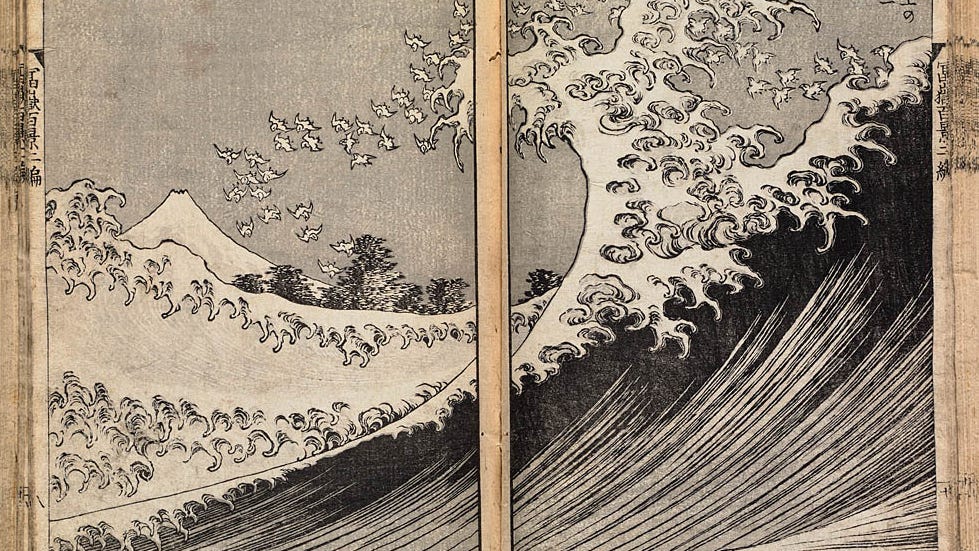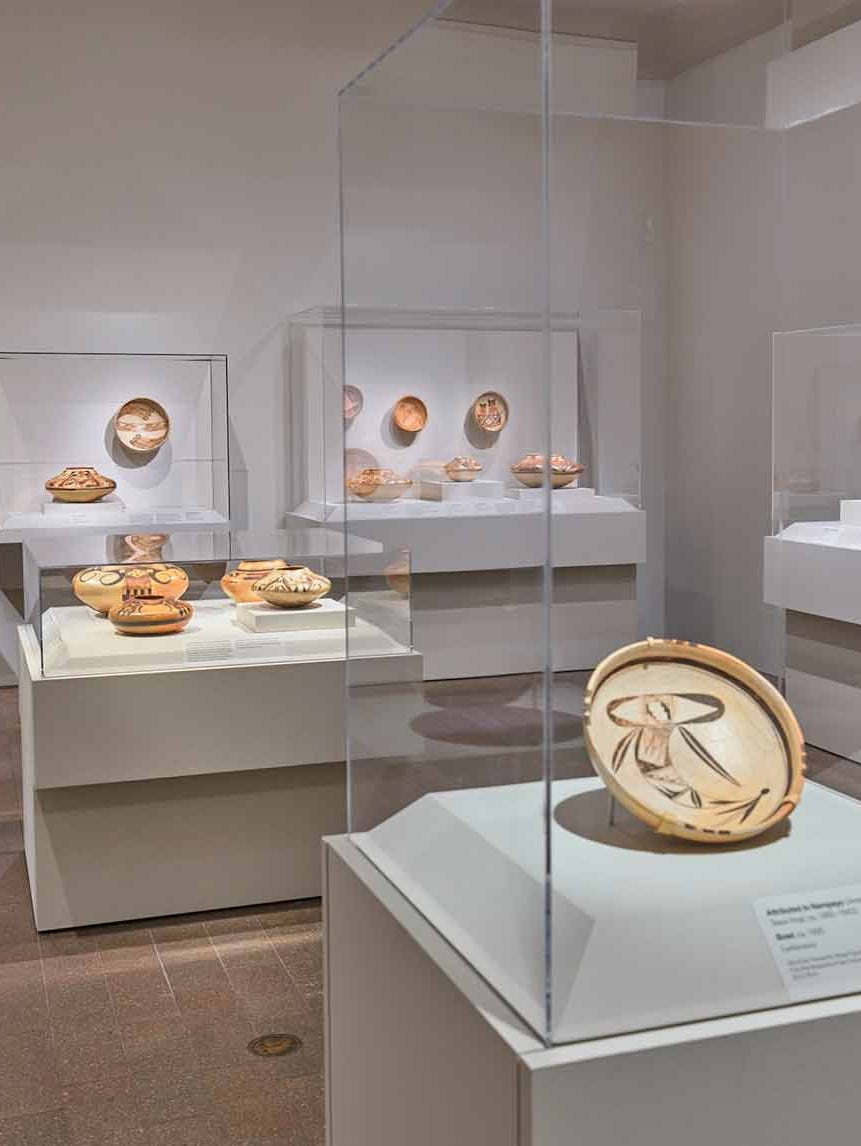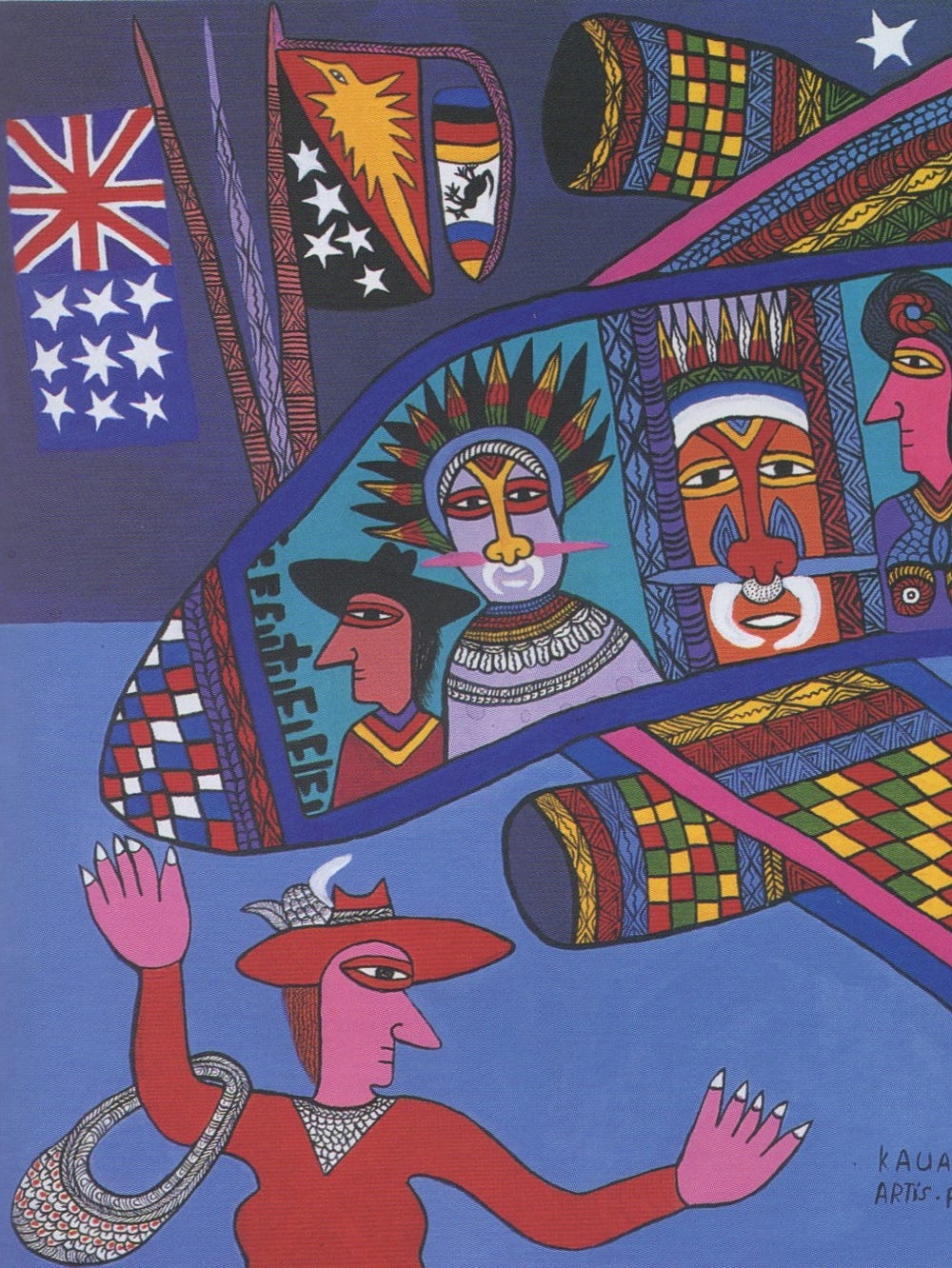Hokusai, Untitled (Fuji Seen from Above the Waves), (detail) from the book One Hundred Views of Fuji, 1835. Collection of Arthur Tress
Aspects of Mount Fuji in Japanese Illustrated Books from the Arthur Tress Collection
Jump to
Noted photographer Arthur Tress (b. 1940) began collecting Japanese books in the fall of 1965 when he was a student at the Zen study center associated with the Shōkoku-ji temple in Kyoto. “After classes I would wander the back alleys behind the school, and I accidentally came upon a small, dilapidated secondhand bookstore that was filled from floor to ceiling with thousands of ragged old Japanese books for only a few dollars each,” he recalls. “I was enchanted by the lovely, soft paper, and bold illustrations [that were] often by important ukiyo-e artists such as Utamaro and Hokusai. I bought a few and was hooked for a lifetime’s passion.”
In the 45 years since that first discovery, Tress continued to collect books and now has a comprehensive collection numbering several hundred volumes. He has selected a small group from his collection for this first of a two-part exhibition of illustrated books on the subject of Fuji, the iconic mountain that is the enduring symbol of Japan.
Mount Fuji, with its almost perfect conical shape, has inspired Japanese poets and artists for hundreds of years. The Tress collection exhibition brings together books dating from the late 1600s through the 19th century that show Fuji viewed from various vantage points, at different times of year and during all four seasons. Fuji is also seen as a decorative motif in elaborately printed pattern books for kimonos and folding fans. Key among the selections are several volumes featuring illustrations from Hokusai’s One Hundred Views of Mount Fuji, published between 1834 and 1849 after his successful color print series, Thirty-six Views of Mount Fuji (1831 – 1834).



